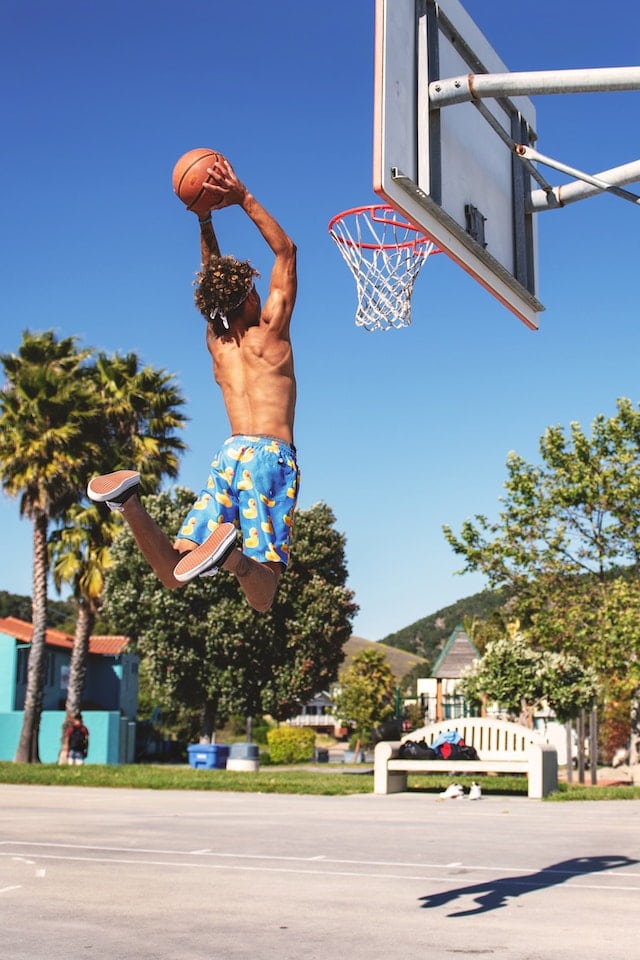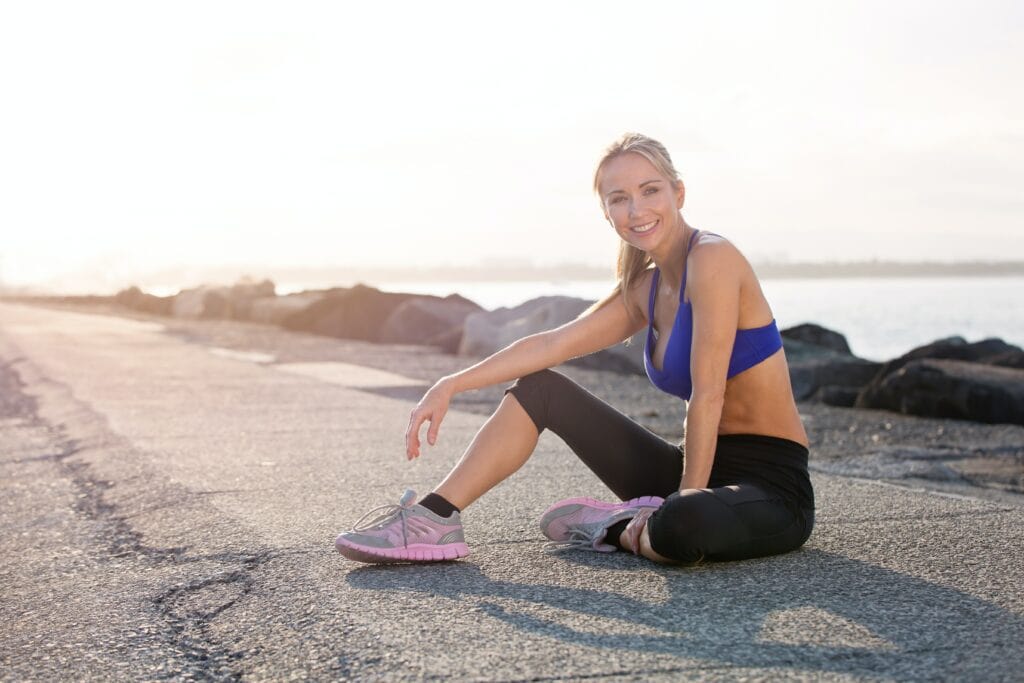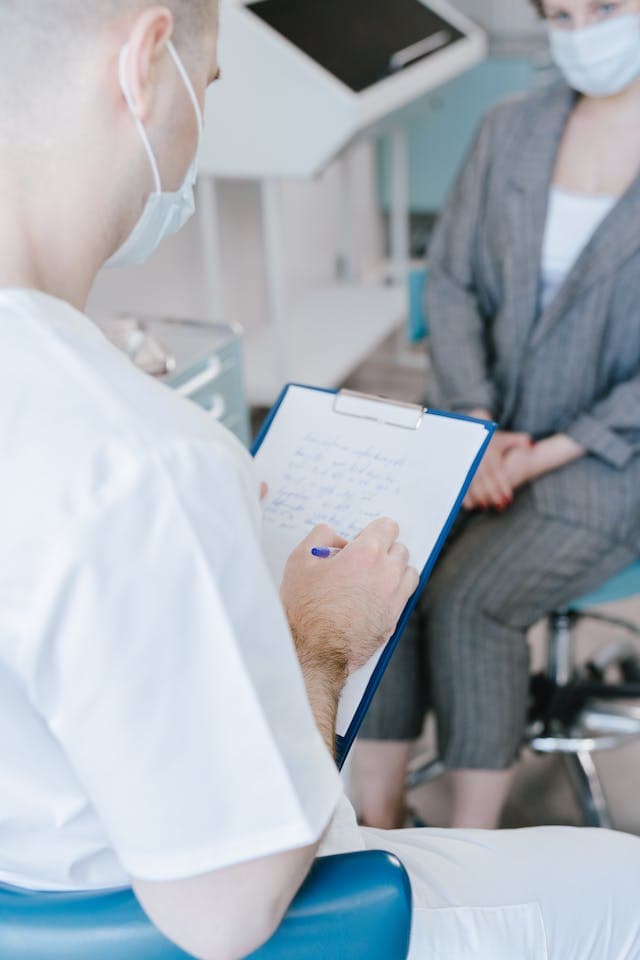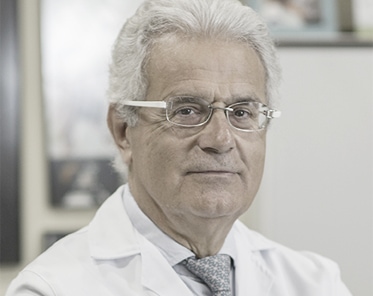Knee Ligament Injury follow-up (ACL Surgery Follow-Up) Using Arthrometers
Enhance knee ligament injury follow-up with GNRB & Dyneelax arthrometers. Our content highlights their crucial role in managing knee injuries for professionals like orthopedic surgeons and physical therapists. Learn about their advanced sensitivity and impact on rehabilitation, through expert insights and success stories. Embrace the new standard in patient care.
Introduction
Ensuring a successful recovery journey for patients with knee ligament injuries necessitates meticulous follow-up and precise monitoring of the healing process. Traditionally, magnetic resonance imaging (MRI) has been employed to assess the extent of ligament damage and track recovery. However, these methods can sometimes fall short in sensitivity, especially in cases of partial anterior cruciate ligament (ACL) ruptures and ongoing assessments.
The GNRB & Dyneelax arthrometers have emerged as groundbreaking tools designed to enhance diagnostic accuracy and follow-up efficiency. These state-of-the-art arthrometers are tailored to provide unprecedented precision and ease in monitoring knee ligament injuries. By offering a reliable, non-invasive, and cost-effective alternative to traditional methods, GNRB & Dyneelax are rapidly becoming indispensable tools for orthopedic surgeons, radiologists, sports medicine doctors, and physical therapists.
In this section, we explore the critical role that these arthrometers play in the follow-up of knee ligament injuries, showcasing how they contribute to streamlined patient care and improved recovery outcomes.




The Need for Accurate Knee Ligament Injury Follow-up
The journey of recovery from a knee ligament injury is often a complex and nuanced process. During this period, healthcare professionals are tasked with ensuring that the treatment is progressing as expected and that any potential complications are swiftly identified and addressed. Regular and accurate follow-up assessments are pivotal in achieving this goal.
Challenges with Traditional Methods: Traditional methods, such as MRI, have long been employed to track the rehabilitation progress of ligament injuries. While MRIs offer detailed imagery, they come with their own set of limitations:
Sensitivity
MRIs may not always detect minor changes or partial ruptures effectively, leading to possible underdiagnosis or delayed interventions.
Accessibility
Regular MRI scans can be challenging to schedule promptly and may be burdensome for patients.
Cost
Frequent MRI examinations can be financially taxing for healthcare systems and patients alike.
The Importance of Precision: Precise and timely follow-ups are critical in adjusting and optimizing treatment plans. An accurate evaluation allows healthcare professionals to:
Monitor Healing
Keep a close eye on the healing trajectory and ensure that it aligns with the expected recovery timeline.
Tailor Rehabilitation
Make informed adjustments to rehabilitation exercises and physiotherapy regimens based on the progress or setbacks observed.
Prevent Complications
Early detection of any discrepancies or abnormalities can prevent complications and ensure prompt interventions.
In light of these needs, finding a method that can seamlessly integrate into the regular follow-up routine while providing accurate and reliable data becomes imperative. The quest for such a solution brings us to the advanced capabilities of the GNRB & Dyneelax arthrometers.
Advantages of Using GNRB & Dyneelax Arthrometers for Follow-up:
The GNRB & Dyneelax arthrometers are crafted to meet the specific needs of healthcare professionals in the accurate follow-up of knee ligament injuries. These tools stand out for their ability to provide a host of benefits that make the recovery monitoring process more efficient and precise.
High Sensitivity
GNRB & Dyneelax arthrometers excel in detecting even subtle changes in knee laxity. Their high sensitivity proves especially beneficial in identifying partial ACL ruptures, where traditional methods like MRI may not be as effective.
Non-Invasive Assessment
These arthrometers offer a non-invasive means of assessing knee ligament health. Patients can undergo evaluations without discomfort, making the devices suitable for frequent use during follow-ups.
Cost-Effective Solution
Compared to the financial implications of repeated MRI scans, GNRB & Dyneelax arthrometers present a cost-effective alternative for continuous monitoring, thereby easing the economic burden on both healthcare providers and patients.
Time-Efficient Evaluations
Quick and easy to use, these arthrometers enable healthcare professionals to conduct assessments promptly. This time efficiency ensures that patients receive immediate feedback and adjustments to their treatment plans when necessary.
Objective and Quantifiable Data
The arthrometers provide quantifiable data on knee laxity, allowing for objective evaluations and comparisons over time. This data-driven approach facilitates a more personalized and precise treatment plan.
Compatibility and Integration
The GNRB & Dyneelax arthrometers can be easily integrated into existing patient management systems, ensuring seamless communication and record-keeping thanks the production of results in PDF.
Versatility in Application
Ideal for use by orthopedic surgeons, radiologists, sports medicine doctors, and physical therapists alike, these arthrometers cater to a wide spectrum of healthcare professionals involved in knee rehabilitation.
Together, We Achieve
Every step in recovery is a victory. Embrace the journey to rebuild, stronger than before.
Application in Follow-up Assessments:
GNRB & Dyneelax arthrometers play a pivotal role in streamlining and optimizing follow-up assessments for patients with knee ligament injuries. Let’s explore how these devices find application across various stages of the recovery journey.

Diagnosis Monitoring
The arthrometers allow healthcare professionals to monitor subtle changes in knee laxity over time, ensuring that any deviation from the expected healing trajectory is promptly identified.
Treatment Plan Adjustment
By providing precise and reliable data, GNRB & Dyneelax arthrometers empower healthcare providers to make informed adjustments to rehabilitation plans. Tailored interventions, such as changes in physiotherapy exercises or medication, can be implemented based on the data gathered.
Prevention of Re-Injury
Regular assessments using these arthrometers help identify any lingering instability or laxity in the knee, which can be indicative of a risk of re-injury. By spotting these signs early, preventative measures can be taken to strengthen the knee and safeguard against future injuries.
Progress Tracking
The objective data procured by these devices allows for a systematic tracking of progress. This can be beneficial not just for healthcare providers but also for patients, who can gain a clear understanding of their recovery journey.
Post-Surgical Follow-up
For patients who have undergone surgical procedures, these arthrometers can be used to closely monitor the healing process, ensuring that the surgical intervention has been successful and that the knee is regaining its stability and strength.
Athletic Performance Monitoring
For athletes, the arthrometers can be used to regularly assess the strength and stability of the knee ligaments, ensuring that they are fit to return to their sports activities and minimizing the risk of future injuries.
Physical Therapy Integration
Physical therapists can utilize the data from GNRB & Dyneelax arthrometers to fine-tune therapy sessions, optimizing exercises for the best recovery outcomes.
Long-Term Health Surveillance
Even after the initial recovery phase, these arthrometers can be used for periodic checks to ensure the long-term health and stability of the knee.


DOI: 10.24966/ORP-2052/100035

DOI: 10.1016/j.knee.2023.03.017

DOI: 10.1016/j.medntd.2023.100254
Don’t just take our word for it
Testimonials
To all users and those interested in the GNRB devices designed and patented by the Genourob Company.
Over the last 4 years, we have been intensively working the new method of Automatic Dynamic Laximetry, LDA, with its device the GNRB.
In addition to providing a state analysis of the state of the Anterior Cruciate Ligament (ACL) GNRB Gives a functional analysis as well.
So With the GNRB it’s possible to have a Dynamic Analysis of the stiffness of the ACL pre-surgery and of the graft post-surgery. It is useful in post-op follow-up for the graft Ligamentization assessment, and therefore a good indicator of the stability of the Knee.
The device is effective, reliable and easy to use and assists to improve diagnosis and treatment of the ACL injuries.

The main interest of this tool (but not the only one) in public health is to allow primary care doctors, and especially emergency physicians, to categorize knee sprains urgently, thanks to a simple-to-use tool in just a few minutes. This classification from the first consultation into a severe sprain (with ACL rupture) or mild (without ACL rupture) allows, on one hand, to avoid unnecessary and costly additional examinations (MRI) in the case of mild sprains, and on the other hand, to immediately adapt treatment to the severity of the sprain, avoiding, for example, unnecessary prolonged immobilizations.

I the undersigned, Doctor Henri ROBERT, Knee ACL surgeon specialist, confirm that the GNRB, ROTAM & DYNEELAX arthrometers are very accurate, reliable and with the best reproducibility in the world.
The arrival of the DYNEELAX revolutionizes the possibilities of the practitioner to regularly analyse the rotational and translational stabilities of the cruciate ligaments in the knee, using a non-invasive test, before and after surgery or as a preventive measure, or after partial tears. Numerous additional applications include notably the analysis of meniscus lesions (medial or lateral) which can be highlighted thanks to the rotational tests, as well as the functional analysis of the strength of the injured tissues.
The rotational analysis is an essential breakthrough as it allows the identification of rotational instabilities which are very difficult to detect with known clinical physical tests (pivot shift test, the Dejour test, dial test...). The DYNEELAX is the result of more than fifteen years of research and development which has led to the most advanced device in this field of study on an international level.
It is essential for surgeons to know the results of rotatory tests in order to adapt ACL surgery and perform or not an extra-articular tenodesis.
As much as translational stability could be controlled manually or with small manual laximetry tools, rotation has no suitable tool to validate this (nor any reliable clinical test due to the absence of relaxation necessary to carry out these tests properly).

This is a letter detailing my/our experience with use of the Genourob Dyneelax laximeter device.
We are a high volume tertiary referral arthroplasty centre and sports medicine centre in Western Australia. We are closely associated with the Orthopaedic Research Foundation of Western Australia.
We have had an excellent experience with the use of our Dyneelax device for multiple research projects, including novel investigation of the sagittal stability of total knee replacements and revision total knee replacements. We also have numerous projects working towards examining the stability of anterior cruciate multi-ligament knee reconstructions.
Our experience working with the company has been excellent. We are literally located on the other side of the world; however, they have gone over and above to help us with training and our customer support. I cannot recommend them highly enough.
In terms of the device, it is an excellent research tool which enables us to establish quantified measurement of the sagittal and rotational stability of multiple different knee arthroplasty devices, a measurement that hereto forth was impossible. This is generating high level novel research of an international interest.

My name is Michael Rüscher, I work in the field of conservative and operative orthopaedics as an osteopath and physiotherapist! I am currently working intensively on my PHD dissertation in the field of biomechanics.
I discovered the device Dyneelax from the company Genourob in the course of my research about 1 year ago and the idea was born to write the dissertation with this laximetry on the knee joint. I have now taken over 100 measurements on operated and conservative cruciate ligaments and am thrilled with the measurement method. It is simple and very reliable to use.
In my daily work with my brother Dr. Rudolf Rüscher we evaluate the cruciate ligaments by means of MRI and immediate laximetry.
We have already had 3 patients with a described complete cruciate ligament rupture who then showed no clear instability in the laximetry measurement, i.e. less than 1.5 mm at 100 Micro Newton. So we are excited about this functional study of this laximetry.
The topic of my dissertation is "Comparative investigation of the biomechanics (laximetry by Genourob) of the knee joint with rupture of the anterior cruciate ligament after surgical and conservative treatment under consideration of economic efficiency".
I would therefore like to thank the Genourob company once again for this innovative examination device!

Who Should Use Dyneelax & GNRB?
Benefits for Each Professional:
Your questions answered
Common questions
How do the GNRB & Dyneelax arthrometers compare to traditional MRI in follow-up assessments?
GNRB & Dyneelax arthrometers offer a high level of sensitivity, especially in detecting partial ACL ruptures, which may sometimes be challenging for traditional MRIs. Additionally, they are non-invasive, cost-effective, and time-efficient, making them well-suited for frequent follow-up assessments.
Can the arthrometers be used for patients of all age groups?
Yes, GNRB & Dyneelax arthrometers are designed to be adaptable and can be used to assess knee ligament health in patients across different age groups, taking into account the specific considerations for each demographic.
How often should follow-up assessments be conducted using these arthrometers?
The frequency of follow-up assessments is determined by the healthcare professional based on the patient’s specific condition, treatment plan, and recovery progress. Regular assessments can be beneficial in tracking and optimizing the rehabilitation process.
Are there any contraindications or limitations to using GNRB & Dyneelax for follow-ups?
While GNRB & Dyneelax arthrometers are safe and non-invasive, it’s important to consult the manufacturer’s guidelines and contraindications to ensure appropriate use. Any specific patient conditions or concerns should be discussed with a healthcare professional.
Can physical therapists integrate data from these arthrometers into rehabilitation plans?
Yes, physical therapists can utilize the data obtained from GNRB & Dyneelax arthrometers to tailor and adjust rehabilitation exercises and therapy sessions, ensuring optimal recovery outcomes.
Resources
To assist healthcare professionals in leveraging the GNRB & DyneeLax arthrometers to their fullest potential, we have curated a collection of resources. These are designed to provide comprehensive insights, from basic setup and operation to in-depth diagnostic procedures. These resources aim to facilitate seamless integration of these innovative tools into your diagnostic practice, ensuring accurate and timely identification of knee ligament injuries.
Research Articles & Clinical Studies:
2023 - GNRB® laximeter with magnetic resonance imaging in clinical practice for complete and partial anterior cruciate ligament tears detection: A prospective diagnostic study with arthroscopic validation on 214 patients.
DOI: 10.1016/j.knee.2023.03.017
2023 - Sensitivity, repeatability and reproducibility study with a leg prototype of a recently developed knee arthrometer: The DYNEELAX®
DOI: 10.1016/j.medntd.2023.100254
2019 - Anterior knee translation measurements after ACL reconstruction are influenced by the type of laximeter used.
DOI: 10.1007/s00167-020-05950-5
Instructional & Presentation Videos:
Click Here to view GNRB Tutorial Video
Click Here to view the DyneeLax Presentation Video
We are here to help!
We're here to assist you on your journey towards better health and precision in diagnosis. Don't hesitate to reach out with any questions or inquiries. Contact us today and let us guide you towards a healthier tomorrow.
Visit us
Bâtiment 60, Rue du Chef de Bataillon Henri Géret
53000 Laval
France
Email Us
yves.crystal@genourob.com
Call Us
+33 7 66 76 03 92 Whatsapp or Phone Call
